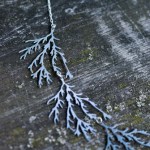Science
Over at the Intersection's new digs, Sheril has posted a rather long list of fellowship programs for people interested in science policy. Sponsors include government agencies, private universities, professional societies, and private foundations, and cover pretty much every branch of science. If you'd like to take a look inside the sausage factory and spend some time trying to help make better science policies, check out the list.
Sadly, the list doesn't seem to include any of the programs Chris Mooney called for, where science-friendly billionaires donate money to support people to become…
Sorry to keep harping on Hoelldobler & Wilson's The Superorganism. But Wilson's section on ant evolution is so bad, so out of touch with the state of the field that I can't help but to rant.
Both Chapter 7 (The Rise of the Ants) and Chapter 8 (Ponerine Ants: The Great Radiation) are predicated on the argument that certain groups of poneromorph ants form a clade. In defense of this assumption, Wilson writes (page 322):
...Barry Bolton has recently split Ponerinae into seven subfamilies (Ponerinae, Amblyponinae, Ectatomminae, Heteroponerinae, Paraponerinae, Proceratiinae, and the…
"...we really do not understand the quantum theory in an intuitive manner because quantum laws are so radically different from the classical laws of physics. The dichotomy that the modern world is quantum, but the precise meaning of the quantum remains elusive, disturbed the stalwarts of physics such as Einstein, Schrodinger, and Feynman, and continues to baffle physicists even today. This lecture will explore this curious state of affairs..."
A few weeks ago, Prof Sankar Das Sarma gave a public lecture at the Kavli Institute on "Quantum Reality"
The online lecture is here - video and…
TED talks are rather mixed in quality, but this is a good one: Bonnie Bassler talking about bacteria, bacterial communication, and even squid. Of course, even the squid are vehicles for culturing bacteria…
Algae filament necklace
Pam at Phantasmaphile alerted me to Nervous System, a jewelry company founded by MIT grads Jessica Rosenkrantz and Jesse Louis-Rosenberg. Nervous System "creates experimental jewelry, combining nontraditional materials like silicone rubber and stainless steel with rapid prototyping methods. We find inspiration in complex patterns generated by computation and nature."
While their various lines don't look quite as I expected - I was anticipating something Haeckel-like for "radiolaria" and neuronal for "dendrite" - they are intriguing and definitely "feel" organic.…
More or less alongside my piece on depression's wiring diagram, this months' Scientific American Mind has a piece I wrote on how social hierarchies develop among rats.
Darlene Francis, a psychologist at the University of California, Berkeley, placed 80 newly weaned rats in cages of four, with cage mates matched for size, activity level and early life environment. To Francis's amazement, it took weeks--until the rats were well past puberty--for a social hierarchy to evolve (as indicated by which mouse got first dibs at food and water, among other measures). Perhaps more surprising was that…
In which, having largely stayed out of it, I wade into the ongoing rivalry between bloggers and more mainstream forms of science writing...
The latest round in this seemingly endless debate was a review by New Scientist of Open Lab 2008, an anthology of the best science blogging from the last year. Others, including Brian Switek and SciCurious, have touched on the specific criticisms levied by the review, but I wanted to pick up on the more general issue it raised - namely the relative merits and pitfalls of science blogs compared to mainstream science writing.
I am increasingly uneasy with…
...whose arrival is apparently scored with new-age music and accompanied by your choice of beverage. Be warned.
New ScienceBlogger and American Gladiator Ethan Siegel of Starts With a Bang has a couple of nice posts about dark matter and how we know it's there (one, two).
These posts reminded me that I never did follow up on the discussion following my post about Magic World Media, who are looking to publish kids' books about science, and seeking kindergarten-level explanations about dark matter and dark energy. A few commenters expressed doubts about whether this could or even should be explained to kids at that level.
I don't have any strong feelings about the "should" question, but it seems to me…
Oh, linky blogosphere, how I love thee!
I was just starting to browse through Atoms Arranged Meaningwise by Rachel McKinney - which I found via Scientiae's blogroll - when her most recent post sent me shooting off to Threadbared. Rachel notes:
And I know we're supposed to be good little serious philosophers and clothes aren't supposed to be the sort of thing worth thinking too hard about, but that's just the kind of fucked-up masculinist logic that got us into this mess in the first place, right?
I suspect Isis would agree!
Then the pitch for Threadbared:
Threadbared is a blog by two…
There are two interdisciplinary science meetings coming up that you should consider attending, in NYC and DC. Strangely enough, the ubiquitous Chris Mooney is speaking at both of them. Hmmm.
From April 30-May 1 in DC will be the AAAS Forum on Science and Technology Policy, which is a somewhat wonky look at federal science policy and government affairs. The agenda highlight? A plenary session on the future of science journalism, to which I'm looking forward with both enthusiasm and curiosity, given the wide range of opinions on the blogosphere. I'm sure there will also be lots of discussion…
Yesterday I was listening to Morning Edition on NPR and caught this very intriguing segment, Shakespeare Had Roses All Wrong. Would you describe a bridge as fragile, elegant, beautiful, peaceful, slender, pretty? Or as strong, dangerous, long, sturdy, big, towering? Lera Boroditsky, an assistant psychology professor at Stanford University, found that it depends - for native German and Spanish speakers, on whether your native tongue assigns a feminine or masculine gender to the noun bridge.
Boroditsky proposes that because the word for "bridge" in German -- die brucke -- is a feminine noun…
Yesterday, Phil posted a lego version of this scene, so I thought it would be a good time to post the real thing.
Atlantis on Launch Complex 39-A
6 April 2009
This picture is obviously looking at the back side of the vehicle, but the orbiter would not have been visible even if I had a view from the opposite side of the pad - the Rotating Service Structure is in place and covers the orbiter.
Via Matt Yglesias, a new CBS/ New York Times Poll has been released, accompanied by quite possibly the stupidest graphics ever. The pseudo-pie-chart at right is one of three, all of which have the same glaring flaw as this one.
Somebody really ought to lose their job for this. There's just no excuse for putting out "pie charts" that are this incompetent.
Sadly, this probably went through two or three people before hitting the web, and nobody noticed. It's hard to think of a better example of how deeply innumeracy has penetrated the media.
The animals of the Burgess Shale are holy objects--in the unconventional sense that this word conveys in some cultures. We do not place them on pedestals and worship from afar. We climb mountains and dynamite hillsides to find them. We quarry them, split them, carve them, draw them, and dissect them, struggling to wrest their secrets. We vilify and curse them for their damnable intransigence. They are grubby little creatures of a sea floor 530 million years old, but we greet them with awe because they are the Old Ones, and they are trying to tell us something.
Steven Jay Gould
Wonderful…
Here is an interesting discussion of a recent paper on the operational and theoretical definitions of "epigenetics". This term - which has a deep history, well before genetics - is interpreted in every manner from inherited histone patterns on chromosomes to parental investment and extrasomatic inheritance. The authors of the discussed paper go towards the former extreme, while Eva Jablonka goes for the other. It's always fun to see scientists arguing over terms.
Scibling Bora has expressed his wish "to end once for all the entire genre of discussing the "bloggers vs. journalists" trope," and tried to do so with perhaps the most massive science-journalism-Web2.0 post evah.
Bora says,
the whole "bloggers will replace journalists" trope is silly and wrong. No, journalists will replace journalists. It's just that there will be fewer of them paid, and more of us unpaid. Some will be ex-newspapermen, others ex-bloggers, but both will be journalists. Instead of on paper, journalism will happen online. Instead of massaging your article to fit into two inches…
tags: Scientia Pro Publica, Science for the People, biology, evolution, medicine, earth science, behavioral ecology, chemistry, physics, astronomy, blog carnival
Image: wemidji (Jacques Marcoux).
Nam et ipsa scientia potestas est (And thus knowledge itself is power)
-- Sir Francis Bacon.
Since Tangled Bank has gone the way of the Dodo (Passenger Pigeon, Carolina Parakeet, Ivory-Billed Woodpecker -- insert the name of your favorite extinct species here) and will probably never be seen again, despite promises to the contrary, there is a huge hole in the science writing blogosphere. A hole…
This Tuesday, April 7, the Koshland Science museum in DC is hosting a book talk:
Join NASA scientist Gavin Schmidt and accomplished photographer Joshua Wolfe as they demonstrate how photographs can illustrate the effects of global warming more poignantly than any temperature graph or chart. The two will show photos and satellite images of retreating glaciers, sinking villages in Alaska's tundra, and drying lakes from their new book, Climate Change: Picturing the Science. They will also discuss how scientists gather climate data and come up with cutting-edge research findings.
RSVPs are…
New anatomical DIY project: get a CT scan, remix it to music, and post it on the web! That's what Jaymis did:
Inside The Jaymis: Skeleton Animation - Wide Time from Jaymis on Vimeo.
I got an MRI recently, but they didn't give me the results on a CD, so I can't do this. Now I feel all left out. Nevertheless, it's kind of odd looking at someone else's innards on a Sunday morning over tea. . . is this DIY TMI?
Via Andrew Sullivan.

